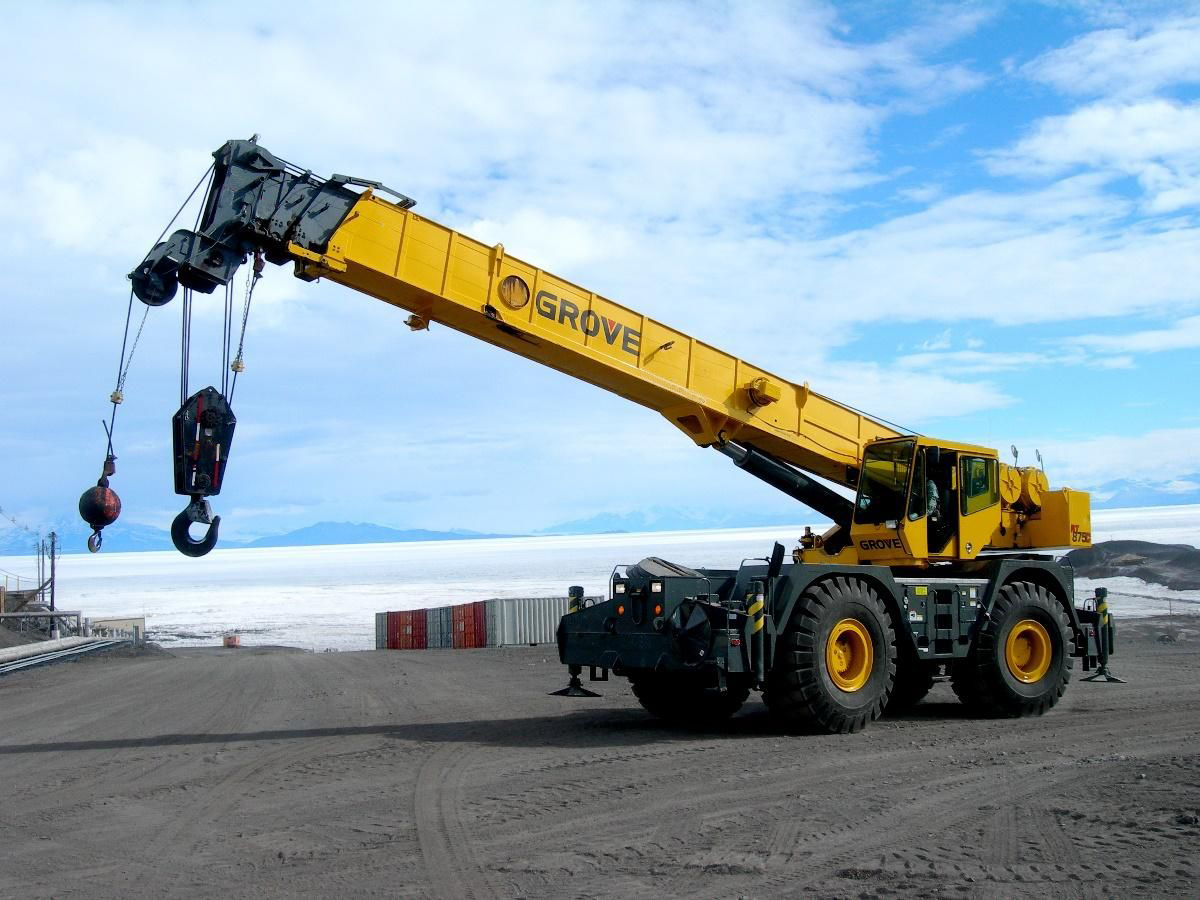With around a dozen different types of crane available on the market, working out exactly which one is going to give you the best return on your investment can be a challenge. Ultimately, the best option likely depends on your company’s main business, as well as additional factors such as user preference, fuel efficiency, operator handling experience and performance. Here we take a look at two types of crane which are frequently used interchangeably, but which actually have some distinct differences. To help you decide whether you need an all-terrain or rough terrain crane, we consider what differentiates them from one another and to what extent one can be used in place of another.
The main difference between an all-terrain and a rough terrain crane
The key variation between the two types of machine lies in the method of movement. An all-terrain crane has tires which are capable of travelling at normal speeds on public roads. Whilst they are robust enough to negotiate most forms of challenging terrain, they will perform less well as the conditions edge towards the limits of their tolerance. That said, the fact they can be driven from one site to another without the need for a trailer results in considerable time and money savings each time the crane is moved.
Rough terrain crane
A rough terrain crane usually has four heavy-duty rubber tires which are designed for stability and grip in conditions of extreme mud, extreme gradients, unstable or slippery surfaces. The crane is mounted on a platform above the tires. Outriggers often provide added stability to the machine. Normally a single-engine powers both the lifting equipment and the engine. This is an extremely stable crane which can be easily manoeuvred into position. Whilst transporting the crane to the required site can be an arduous, slow business, once it’s arrived, minimal preparation is needed before it can commence work.
Ultimately, when it comes to used terrain cranes for sale, whether you opt for a rough terrain crane or an all-terrain option largely depends on whether you will be moving sites frequently, as well as what type of work will be completed when you get there. If you’re not sure what type of crane is going to be best for your needs or require any further advice and information on the various types of crane out there, please get in touch and we’ll be happy to help.


 1400 Broadfield Blvd, Houston, TX 77084,
USA.
1400 Broadfield Blvd, Houston, TX 77084,
USA.